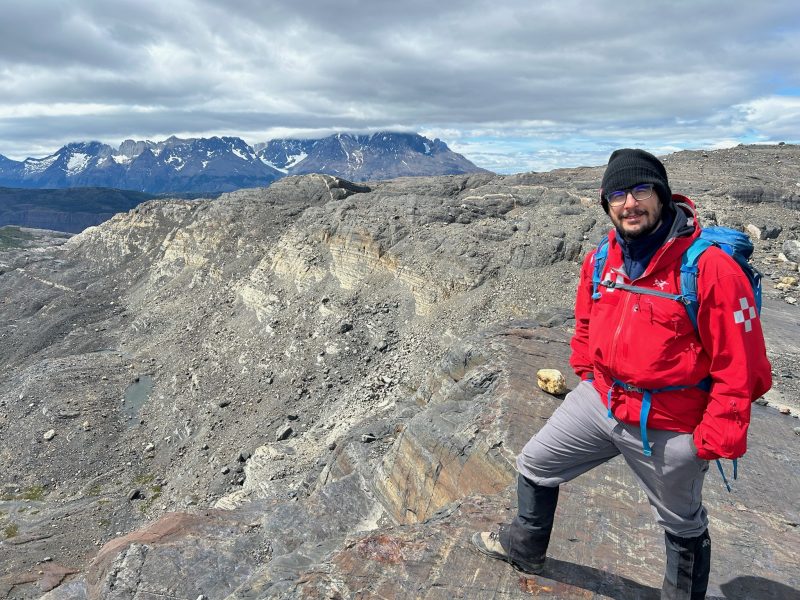Researchers Propose New Step in Tectonic Squeeze
December 8, 2024

Back arc basins are large-scale geological features that push continents apart and pull them together as they open and close over millions of years. The basins shape mountain ranges, help regulate the planet’s climate, and hold extensive geological records of the planet. However, there’s still much to learn about the details of how the opening and closing process works. Research led by Jackson School of Geosciences doctoral student Fernando Rey and published in the journal Geology is helping shed light on what might be an overlooked step in the closure process.
While analyzing tiny crystals called zircons from the Andes mountains of Patagonia — which formed by the closing of a back arc basin — Rey found what looked like an anomaly. Zircons that formed when the basin was starting to close had the chemical signature of zircons that formed when the plates were moving apart. The closing signature eventually showed up, but about 200 million years later than expected.
In the study, Rey and his collaborators propose that the delayed signature could be the result of a transitional phase in the closure process. This phase involves the same tectonic forces that squeeze the plates together also underthrusting crust into a magmatic chamber where the zircons are formed — influencing its isotopic signature. “If you put some oceanic basin below this magma, you have a change in the composition of this magma as it’s incorporated,” said Rey. “This is something that was not documented before this study.”
Researchers think this transitional phase could be a step in the back arc basin closure process around the world. If that’s the case, there’s a good reason it has not been observed before, said Rey. Most back arc basins close faster than Patagonia did — in a few million years rather than tens of millions. This shorter closure window means there’s less of a chance for zircons that formed during this transitional phase to make it into the geologic record.
Rey is currently analyzing zircons from the Sea of Japan — a modern back arc basin that’s in the early stages of closure — to see if there are signs of oceanic crust influencing the zircon signature.
Back to the Newsletter